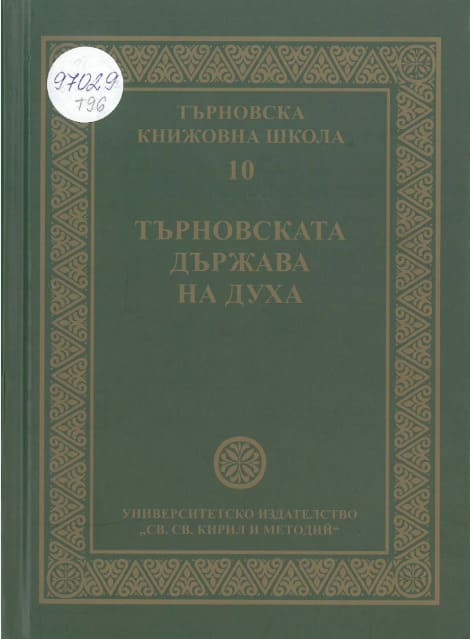Археологически свидетелства за проникването на Кирилометодиевото дело в Североизточна България
Archaeological Evidence of the Spread of the Cause of Cyril and Methodius in North-Eastern Bulgaria
Author(s): Georgi Atanasov
Subject(s): History, Archaeology, Cultural history, Local History / Microhistory, Middle Ages, 6th to 12th Centuries
Published by: Великотърновски университет „Св. св. Кирил и Методий”
Keywords: Мonastery; Ravna; Tsar Asen; pope Clement; knyaz Boris; Cyril and Methodius; Cyrillic alphabet; Glagolitic alphabet; friar Manasius
Summary/Abstract: Presented are two inscriptions accompanied by graffiti – drawings from the end of 9th and the beginning of the 10th century found in North-Eastern Bulgaria. It is believed that they are directly related to the spread of the cause of Cyril and Metho¬dius in Bulgaria since the mid-9th century. The first monument was discovered during archaeological excavations in the Old Bulgarian monastery near the village of Ravna, Provadiya region, east of the capitals of Pliska and Preslav. There is no doubt, there is written КΛΗΜΕΝΤΟΣ ΠΑΠΑ ΡΟΜ(Η)С (Clement Pope of Rome). Next to the sign, there is a dove against two dragons. Definitely the cult of Clement Pope of Rome, who lived in the first century, and died in exile in Chersonese, was introduced in Bulgaria by the Great Moravian students of St. Cyril and St. Methodius, who arrived in Pliska in 886. The cult was reborn after Cyril found the remains of Clement Pope of Rome on January 30th 861 at the mission in Chersonese, then took them to Rome and formally submit them to the Pope Adrian II in 867. It is remarkable that the only Eulogy to Clement of Rome, written by Clement of Ohrid himself, compares the Pope to a dove brought up by Apostle Peter himself. The second monument is the inscription in Cyrillic and Glagolitic letters from the old Bulgarian fortress near the village of Tsar Asen, Silistra, that emerged around the end of 9th and the beginning of the 10th century. It reads: “On Gospozhina day has been placed the cross. Lord have mercy on me, Manasseh monk with serf through Byzantium“. It is assumed, that Manasseh is a new, unknown by name disciple of St. Cyril and St. Methodius, who specifically warns that he comes from Byzantium, the old name of the Byzantine capital Constantinople. According to Naum’s biography, some of the Mora¬vian students of St. Methodius are sold by the German clergy in slavery. Later, with the support of the Emperor, they were purchased and received in Byzantium, and later, with the personal assistance of Prince Boris, they were brought to Bulgaria.
Book: Търновска книжовна школа – пространства на паметта. Том 11
- Page Range: 353-375
- Page Count: 23
- Publication Year: 2019
- Language: English, Bulgarian
- Content File-PDF

